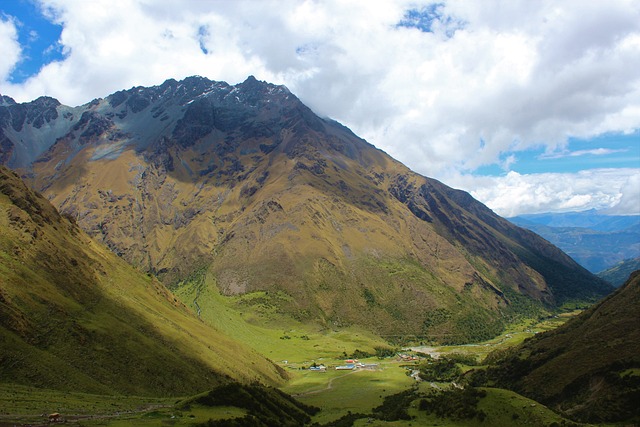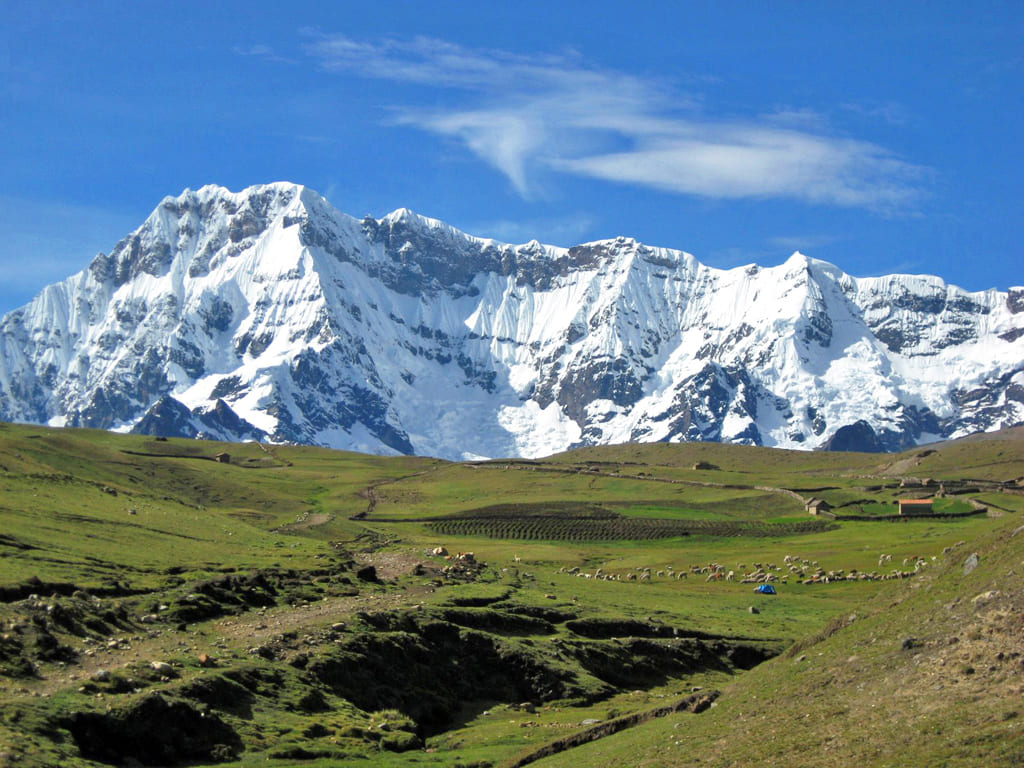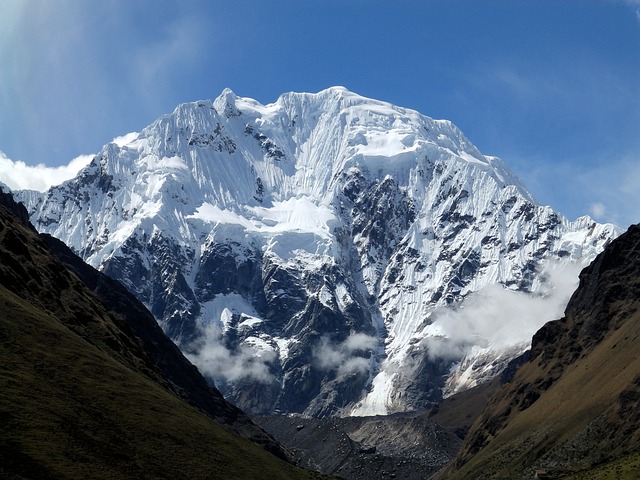When studying sacred arts of the Andes, you might come across the term "Apu," which denotes more than just a place. The revered mountain spirits known as apus are thought to protect, guide, and advise those who live under their sphere of influence. This piece explores the deeper meaning of what constitutes an Apu, revealing the cultural customs and levels of spiritual significance associated with these hallowed beings.
In this blog, we will delve into the numerous layers of meaning that define an Apu, revealing the cultural customs, rituals, and spiritual beliefs that surround these sacred beings. Understanding what makes a mountain an Apu provides a deeper understanding of the Andean way of life, in which the natural world is viewed as a living, breathing entity to which humans are inextricably linked. This work attempts to illuminate the rich tapestry of beliefs that elevate certain mountains to the status of Apus, revealing the profound spiritual significance that these hallowed beings hold in Andean culture.
Unveiling the Mysteries of the Apus: Sacred Mountains of the Andes
What is an Apu?
In the Andean spiritual tradition, the word Apu is extremely important. While many people recognize Apus as the sacred mountain spirits of the Andes, their true essence is much deeper. The Quechua word "Apu," which means "Lord" or "Honored One," refers to more than just a geographical feature. These revered entities are thought to guide, counsel, and protect the people who live in their domain.
However, not every mountain is an Apu, nor is every Apu a mountain. Some mountains are simply physical formations, devoid of the powerful spirits that distinguish an Apu. In contrast, some Apus are powerful universal spirits such as Tayta Inti (Father Sun) or Mama Killa (Mother Moon), rather than mountains.
The question then becomes, what transforms a simple mountain into an Apu? The answer is found in the soul that inhabits it. When a powerful paqo (a master in Andean spiritual traditions) or a revered individual dies, they are often invited to stay and protect the community in the form of an Apu through a ceremony known as Wasichaku. This transformation is more than just symbolic; it is believed that the spirit of the paqo resides in the mountain, guiding and protecting the people.

Etymology & Meaning
The term Apu comes from the Quechua language and means "Lord," "Honored One," or "Chief." In the Inca civilization, it denoted a rank or title in the royal court and military hierarchy. In spiritual practices, the term refers to the "Lord of a Mountain," while the female counterpart is known as Ñust'a or "Princess."
Beyond geographic formations
Not all mountains are considered Apu. Some mountains are merely geographical features without spiritual significance. However, certain mountains are imbued with sacredness and designated as Apus. The term "Apu" can also refer to universal spirit beings like Jesus, Mary, Tayta Inti (Father Sun), Tayta Wayra (Father Wind), Mama Allpa (Mother Earth), Mama Una (Mother Water), and Mama Killa (Mother Moon).
The Transformation of a Mountain into an Apu
The Wasichakuy Ceremony
One of the primary ways for a mountain to become an Apu is through a ceremony called Wasichakuy. This ritual takes place following the death of a master paqo (spiritual guide). During the ceremony, the paqo's soul, or aya, is invited to inhabit a nearby mountain. This process ensures that the paqo can continue to serve and guide their students and community. The mountain then becomes a sacred site for the paqo's spirit.
Case Study of Apu Manuel Pinta
A notable example of this process is the transformation of the mountain that overlooks Wasao near Cuzco into Apu Manuel Pinta. Manuel Pinta was a revered paqo who, following his death, was asked by his apprentices and the local community to become an Apu. The mountain was renamed in his honor, and it is still a sacred site to this day.
Legends and Myths of the Apus

The Legend of Ausangate and Salcantay
A significant Apus legend tells the story of two high-ranking Apus, Ausangate and Salcantay. According to the legend, Cuzco was suffering from a severe drought. Ausangate and Salcantay, two brothers, set out in search of food. Ausangate went south and returned with food, whereas Salcantay traveled north and fell in love with Princess Waynawillca. Despite their love, Waynawillca was sacrificed by her people to keep her from fleeing. In his grief and rage, Salcantay exacted revenge on the Anti people, prompting the gods to turn him into a mountain to prevent further violence.
The Story of Waynawillca
The snowy peak known as Verónica was originally called Waynawillca, which means "Young Sacred." During the Inca period, it was regarded as a sacred agricultural protector. Following Manco Inca's defeat and flight to Vilcabamba, the mountain was renamed Wakaywillque, which means "Sacred Tear," reflecting the sadness of the Inca's loss and exile.
Key Apus of the Andes
Ausangate: The Sacred Mountain of Cusco
- Altitude: 6,384 meters above sea level.
- Location: Cordillera Vilcanota, 100 kilometers southeast of Cusco.
- Significance: Ausangate is the fifth-highest mountain in Peru and plays a crucial role in the Andean spiritual landscape. It is believed to be a male deity whose waters fertilize Pachamama (Mother Earth). The waters from Ausangate flow into the Amazon during the day and return to its lakes at night, forming a river of stars known as Willkamayu (the Milky Way).
Verónica: The Guardian of Agriculture
- Altitude: 5,682 meters above sea level and is the highest point in the Urubamba Mountain Range.
- Location: Urubamba Mountain Range, 50 kilometers from Cusco.
- Significance: Verónica, also known as Waynawillca (Young Sacred), was revered for its ceremonial importance and its role in protecting agricultural prosperity. Originally called Waynawillca, the mountain was renamed Wakaywillque (Sacred Tear) after Manco Inca’s defeat by Francisco Pizarro, symbolizing the sorrow of the Inca Empire’s loss. The Spaniards later associated this name with the legend of La Llorona Verónica, giving the mountain its current name.
Salkantay: The Wild Mountain
- Altitude: 6,264 meters above sea level.
- Location: Cordillera Vilcabamba, near Machu Picchu.
- Significance: Known as "Montaña salvaje" or "Wild Mountain," Salkantay is considered a protector of the territory and continues to play a central role in Andean rituals. The mountain's spiritual importance is matched by its physical challenge, making it a destination for those seeking both adventure and a connection to the divine. The challenging trek around Salkantay offers a unique experience for adventurers.

Experiencing the Apus
To walk among these sacred mountains is to embark on a spiritual journey, learning about the traditions and legends that have shaped the Andean worldview. Whether you're exploring the majestic peaks of Ausangate, the steep slopes of Verónica, or the wild beauty of Salcantay, these Apus provide an experience that goes beyond the physical, connecting you to the ancient wisdom and spiritual practices of the Andes.
To summarize, understanding what distinguishes an Apu allows us to appreciate the profound relationship between the Andean people and their natural environment. These sacred mountains are more than just breathtaking landscapes; they protect a spiritual legacy that continues to inspire and guide those who seek their wisdom.
The Apus of the Andes, including Ausangate, Verónica, and Salkantay, are more than just towering peaks; they embody the spirits of past paqos and hold deep spiritual significance. Engaging with these sacred mountains allows travelers to connect with ancient traditions and the spiritual heritage of the Andean people. Whether through rituals, legends, or direct experience, the Apus offer a profound glimpse into the spiritual landscape of Peru.
Exploring these sacred mountains is not just a journey through stunning landscapes but also a journey into the heart of Andean culture and spirituality.
Ready to start your Peruvian adventure? Contact us today to begin planning your customized tour! Complete our Peru travel survey or email us at info@peruviansunrise.com, and let's make your dream trip a reality.
Thank you for reading!
Please, follow us on Facebook and Instagram, click on the following icons: ![]()
![]()
![]()
And If you liked the article, you are very welcome to share it on your social media.
